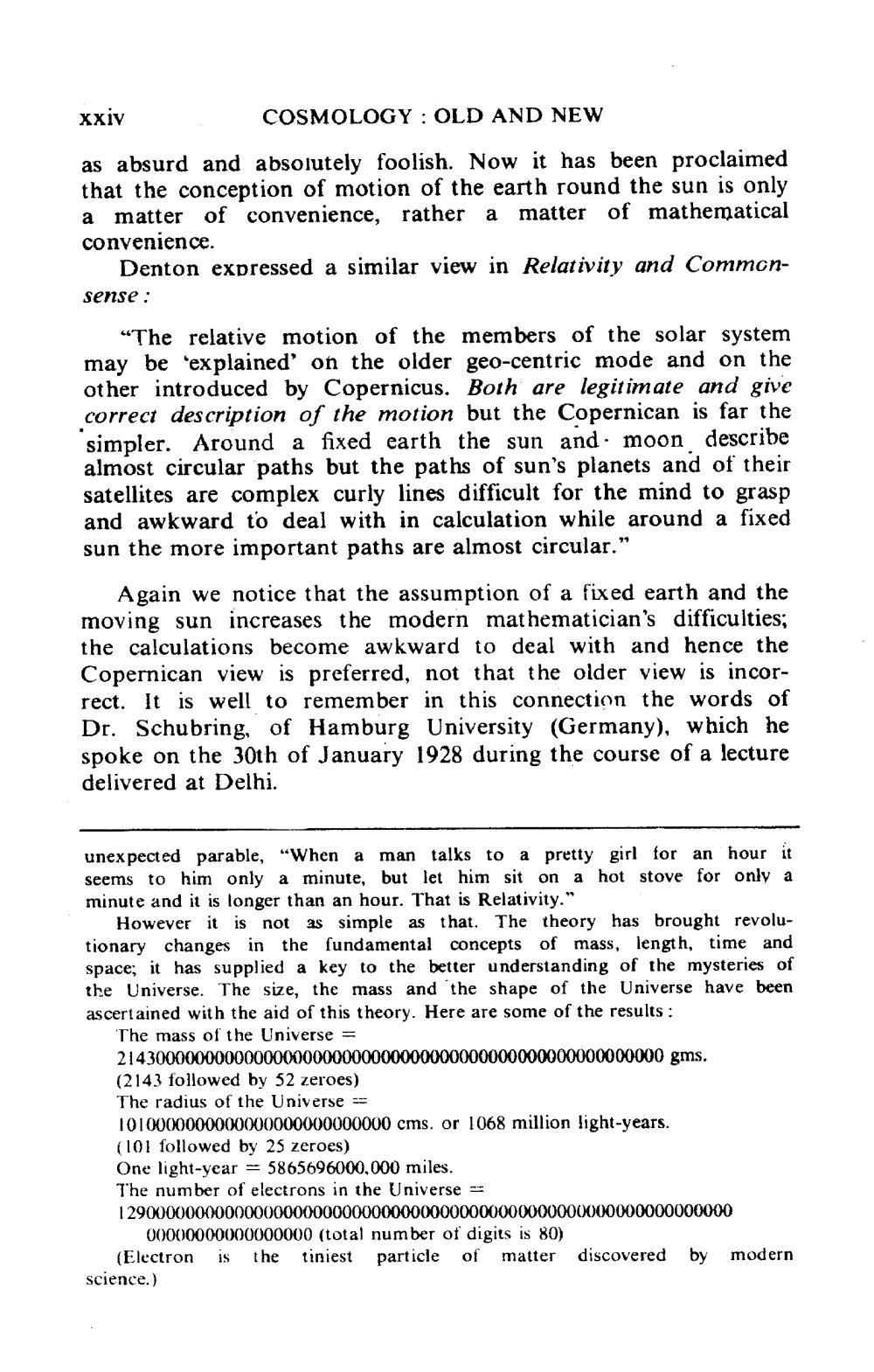________________
xxiv
COSMOLOGY OLD AND NEW
as absurd and absolutely foolish. Now it has been proclaimed that the conception of motion of the earth round the sun is only a matter of convenience, rather a matter of mathematical convenience.
Denton expressed a similar view in Relativity and Common
sense:
"The relative motion of the members of the solar system may be explained' on the older geo-centric mode and on the other introduced by Copernicus. Both are legitimate and give correct description of the motion but the Copernican is far the simpler. Around a fixed earth the sun and moon describe almost circular paths but the paths of sun's planets and of their satellites are complex curly lines difficult for the mind to grasp and awkward to deal with in calculation while around a fixed sun the more important paths are almost circular."
Again we notice that the assumption of a fixed earth and the moving sun increases the modern mathematician's difficulties; the calculations become awkward to deal with and hence the Copernican view is preferred, not that the older view is incorrect. It is well to remember in this connection the words of Dr. Schubring, of Hamburg University (Germany), which he spoke on the 30th of January 1928 during the course of a lecture delivered at Delhi.
unexpected parable, "When a man talks to a pretty girl for an hour it seems to him only a minute, but let him sit on a hot stove for only a minute and it is longer than an hour. That is Relativity."
However it is not as simple as that. The theory has brought revolutionary changes in the fundamental concepts of mass, length, time and space; it has supplied a key to the better understanding of the mysteries of the Universe. The size, the mass and the shape of the Universe have been ascertained with the aid of this theory. Here are some of the results:
The mass of the Universe =
21430000000000000000000000000000000000000000000000000000 gms.
(2143 followed by 52 zeroes)
The radius of the Universe =
1010000000000000000000000000 cms. or 1068 million light-years.
(101 followed by 25 zeroes)
One light-year = 5865696000,000 miles.
The number of electrons in the Universe -
129000000000000000000000000000000000000000000000000000000000000
00000000000000000 (total number of digits is 80)
(Electron is the tiniest particle of matter
science.)
discovered by
modern




